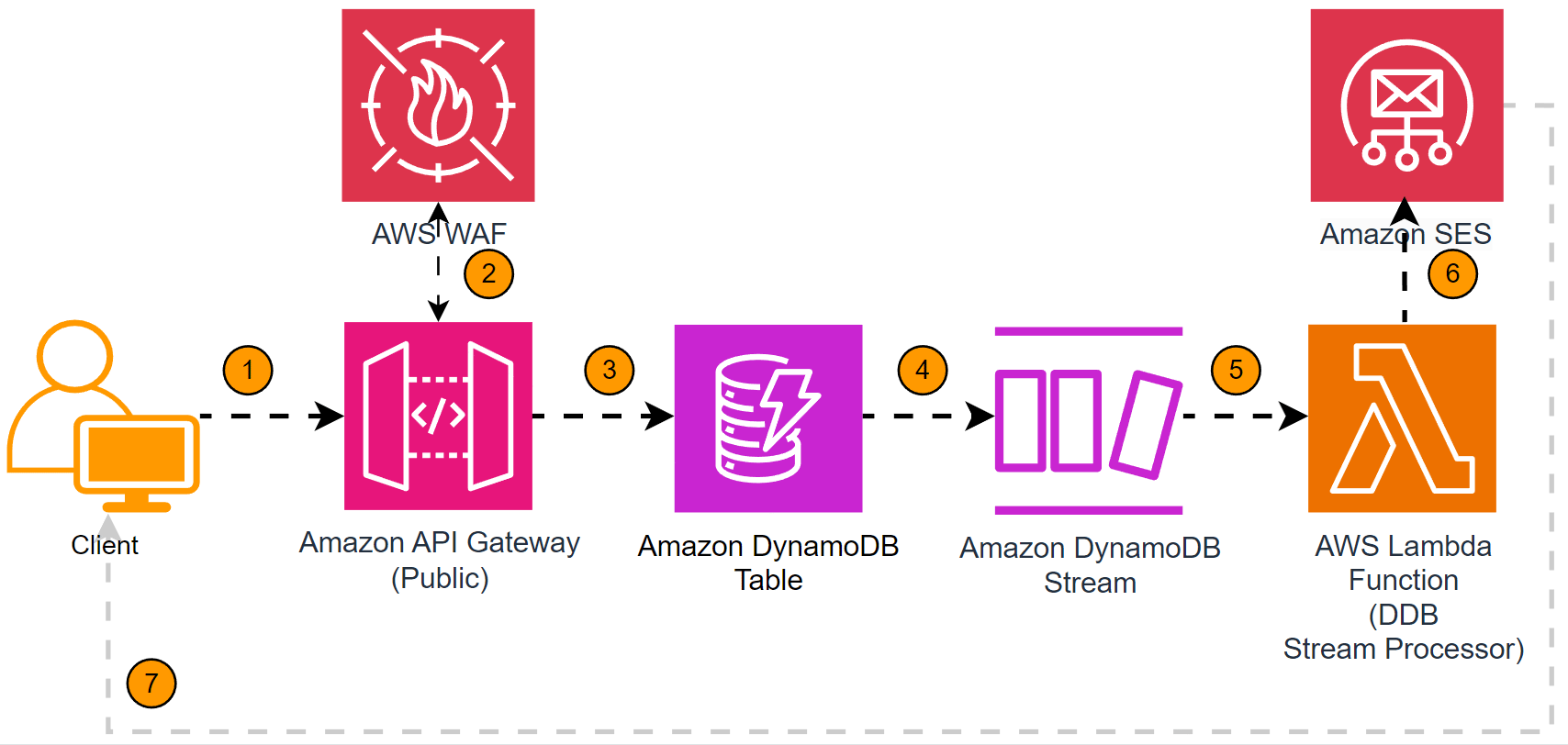Input on AWS-driven form field part 2
Advanced form-field solution architecture hosted by AWS (v2) - newly revised based on input!
Hi #AWS builders - I really appreciate the input from the community on the initial design! I’ve revised the architecture based on community recommendations:

-
Client enters the site, enters their email to be informed of upcoming events, etc. This is a SPA (single-page application) hosted by Amazon CloudFront, serving Amazon S3 as the origin. A CAPTCHA is used to prevent spam/etc.
- The
onClickevent on the form execute’s POST to the API endpoint hosted within the API Gateway endpoint as defined in step - Once validated (
API Key), the event payload is sent to the queue. CORS ensures it’s being submitted through the originating site.
- The
-
AWS WAF evaluates it via the corresponding AWS WAF rule (
AWSManagedRulesCommonRuleSet) - noted here. This will help to preventCrossSiteScriptingattacks and the similar. -
Utilizing a mapping template, Amazon API Gateway is able to translate the request into something DynamoDB can receive securely and in its native input language. Here’s a breakdown:
- Client sends API Gateway a PUT request with the email
- Mapping template transforms this into DynamoDB put format
- Integration request puts the email into the DynamoDB table
- Gets integration response from DynamoDB
- Returns 200 OK response to client
To further describe, a simple userflow:

-
We then enable DynamoDB Streams and add an
event source mappingfor an Amazon Lambda function to receive these events. Here’s a breakdown:- When an item is inserted/updated in the DynamoDB table, a record is added to the DynamoDB Stream
- The stream buffers the inserts/updates (24 hours by default)
-
The associated Lambda function receives events from the stream and processes them.
- The Lambda function processor is triggered when stream records are available
- Lambda process the event record, performs any needed transformations
-
The Lambda function reads the event from the stream and send it to Amazon SES for processing.
-
Amazon SES ships the email from noreply@xyz.com from the trusted domain with the necessary details.
I’m looking forward to sharing the code for this once it’s completed! Stay tuned! :)